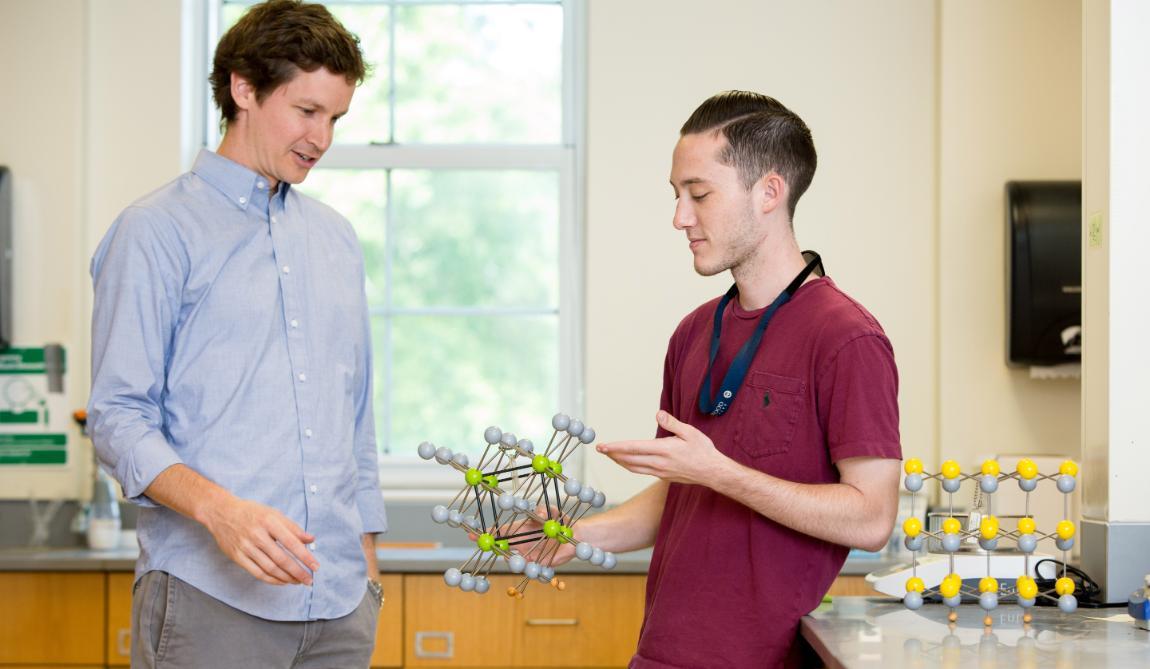

John Brumfield’s notebook looks like some kind of movie prop: pages and pages filled with molecules drawn out in hexagons and lines, each carefully marked with individual atoms neatly labeled.
Every morning, he shows up at Dr. Benjamin Topham’s office with more molecules, ready for testing.
But next to most of the drawings, the same four words appear again and again: “Not a good diode.”
“Science is trial and error,” he said, shaking his head and laughing. “We really don’t know what’s going to happen until we test the molecules and find out if they work right. I can feel really good about one that I’ve created only to find out it’s worthless for what we’re doing. When that happens, ‘not a good diode’ goes in the book. We’ve got a lot of those.”
All of these molecules are theoretical—they don’t exist yet except in Brumfield’s head. But he’s hoping that several of them will function like a diode, one of the basic building blocks of electronic devices that let current run in one direction, but not the other.
Brumfield has spent this summer trying to miniaturize diodes to the molecular level to create some of the world’s smallest electrical circuits. There are some known simple molecules that work ok, says Brumfield, but they are trying to make more complicated ones that are also more efficient.
“A few weeks ago we designed our first diode that worked,” he said. “I came in with a list of molecules that I had drawn out and we picked two and plugged them together. There’s a little amount of hope you have to hold onto when the computer starts working, and it feels pretty good when it comes back positive.”
The applications are enormous. Nearly invisible, these molecule-sized electronic devices promise to transform the worlds of technology, medicine, and many more. But first, it’s up to researchers like Brumfield to find the building blocks that will allow breakthroughs to happen.
And with one good diode under his belt, he goes back to his notebook to carefully draw more molecules that may just hold the key to the circuit.

Leave a Comment